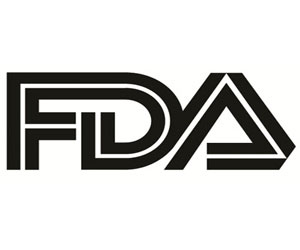- Home
- Editorial
- News
- Practice Guidelines
- Anesthesiology Guidelines
- Cancer Guidelines
- Cardiac Sciences Guidelines
- Critical Care Guidelines
- Dentistry Guidelines
- Dermatology Guidelines
- Diabetes and Endo Guidelines
- Diagnostics Guidelines
- ENT Guidelines
- Featured Practice Guidelines
- Gastroenterology Guidelines
- Geriatrics Guidelines
- Medicine Guidelines
- Nephrology Guidelines
- Neurosciences Guidelines
- Obs and Gynae Guidelines
- Ophthalmology Guidelines
- Orthopaedics Guidelines
- Paediatrics Guidelines
- Psychiatry Guidelines
- Pulmonology Guidelines
- Radiology Guidelines
- Surgery Guidelines
- Urology Guidelines
FDA clears first duodenoscope with disposable elevator component

The U.S. Food and Drug Administration has cleared the first duodenoscope with a sterile, disposable elevator component for marketing in the U.S.The component reduces the number of parts in need of cleaning and disinfection between uses.
The Pentax Medical Video ED34-i10T2 model duodenoscope is intended to provide visualization and access to the upper gastrointestinal (GI) tract to treat bile duct disorders and other upper GI problems. The FDA has granted clearance of the ED34-i10T2 to Pentax of America.
Duodenoscopes are used in more than 500,000 procedures each year as a less invasive way than traditional surgery to drain fluids from pancreatic and biliary ducts blocked by cancerous tumours, gallstones or other gastrointestinal conditions. The flexible lighted duodenoscope can trap contaminated tissue or fluid in its crevices that may be difficult to clean.
“Duodenoscopes with a disposable elevator component represent another major step toward lowering the risk of infection among patients who undergo procedures with these devices,” said Jeff Shuren, M.D., J.D., director of the FDA’s Center for Devices and Radiological Health. “Improving the safety of duodenoscopes is a top priority for the FDA since such devices remain critical to life-saving care for many patients in the U.S. We encourage manufacturers of these devices to continue to pursue innovations that will help reduce risk to patients, and also encourage hospitals and other health care facilities where these procedures are performed to begin or continue transitioning to devices with disposable components that are easier to reprocess. Today’s clearance is another step in the FDA’s ongoing effort to advance the development and availability of safer duodenoscopes."
The FDA has previously issued communications to health care facilities about following appropriate steps for cleaning and disinfecting these devices between use. In August, the FDA released a safety communication recommending that duodenoscope manufacturers and health care facilities transition to duodenoscopes with disposable components. Disposable designs can simplify or eliminate the need for reprocessing of certain components, which may reduce between-patient duodenoscope contamination. The FDA has previously cleared duodenoscopes with removable endcap components. Today’s clearance is the first device with a disposable elevator component — a part that has been traditionally difficult to clean and reprocess. The elevator part of the duodenoscope facilitates access to the bile and pancreatic ducts and is used to position endoscopic instruments during the procedure.
The Pentax Medical Video Duodenoscope ED34-i10T2 is intended to be used with endoscopic devices, introduced in the patient’s mouth, to provide visualization via a video monitor of and therapeutic access to the biliary tract (liver, gall bladder, and bile ducts) through the upper gastrointestinal tract. Risks of using the Pentax Medical Video Duodenoscope ED34-i10T2 include the potential for injuries, including, but not limited to, burns, electric shock, perforation, infection, and bleeding.
The Pentax Medical Video Duodenoscope ED34-i10T2 was reviewed through the premarket clearance (510(k)) pathway. A 510(k) notification is a premarket submission made by device manufacturers to the FDA to demonstrate that the new device is substantially equivalent to a legally marketed predicate device. As part of the premarket clearance review, the manufacturer submitted evidence to the FDA demonstrating that the device is substantially equivalent to a predicate device.

Disclaimer: This site is primarily intended for healthcare professionals. Any content/information on this website does not replace the advice of medical and/or health professionals and should not be construed as medical/diagnostic advice/endorsement or prescription. Use of this site is subject to our terms of use, privacy policy, advertisement policy. © 2020 Minerva Medical Treatment Pvt Ltd